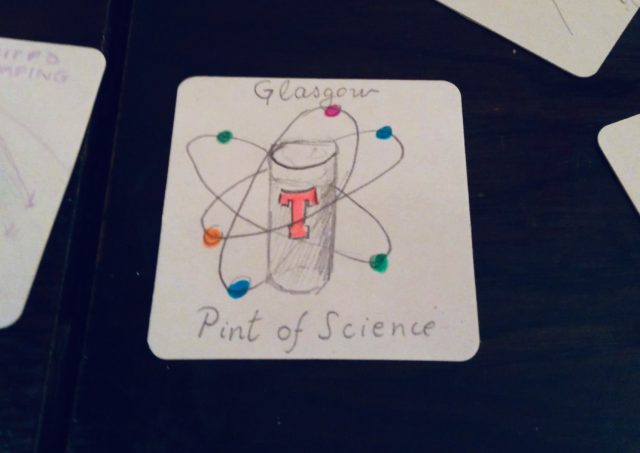The Record Factory on Byres Road can be difficult to spot if you’re not looking for it, but like any good scientist, we know it’s there from the way it draws people in. Wandering through the narrow but short hall, the space opens up to a cosy bar and the scene of Pint of Science’s talk “Gravity, Optics and Quanta”.
The first of the speakers was Dr Maria C. Braidotti, a research associate at the University of Glasgow. Her talk centred around recreating the effects of black holes in a laboratory setting through experiments studying extreme light interactions, the main of which is known as superradiance. Dr Braidotti explained that there are multiple regions of a black hole, two of which are the event horizon and the ergosphere. The event horizon is probably the better known of the two having been mentioned in many famous Sci-Fi films such as Interstellar. Once an object passes over this region, it is impossible for it to return due to the intense gravity associated within this region; even light itself does not have the necessary energy to escape. The area surrounding the event horizon is what is known as the ergosphere and was the area of interest in this talk. When particles enter the ergosphere of a rotating black hole, there is a chance that they can pass close enough to the event horizon to receive a little bit of energy and, loosely speaking, leave the ergosphere of the black hole with more energy (or angular momentum) than they entered with, in a process known as superradiance. Dr Braidotti focused primarily on recreating this effect in the lab environment using smaller spinning bodies, and extrapolated her results to the effects which happen in a real black hole, effectively creating a laboratory black hole.
The next speaker was Massimiliano Proietti, a PhD researcher at Heriott Watt University, Edinburgh. Massimiliano posed the question to the audience: is reality objective? In his talk, he described how quantum mechanics cannot be described by an observer-independent framework and how his recent work further verified this conclusion. Quantum systems can be loosely thought of as playing cards where each quantum system can be assigned a colour, black or red. If one were to measure multiple quantum systems one after the other, they will find the ‘cards’ either shuffled or unshuffled. This was the basis of Massimiliano’s experiment. If two different observers check the system, it is possible under quantum mechanics that one could observe the cards as being shuffled and the other could observe that they are unshuffled, even though intuitively these descriptions are incompatible with one another. How can this be possible? Is one observer lying to the other? Is there an issue with the experiment methodology? Well, it turns out that both descriptions are indeed correct. The proposed solution to this problem is that the facts are ‘observer-dependant’, which is to say that reality is not independent but can be different in each person’s experience; the descriptions are only ‘factual’ relative to those observing the experiment. Whilst this is obviously not possible with a regular set of cards, it is possible in quantum systems such as those which use single photons and was proven to be the case by Massimiliano’s research group. Results like this only further prove that Richard Feynman correct when he said, “I think I can safely say that nobody understands quantum mechanics”.
Unfortunately, I had to leave before the final speaker so sadly didn’t get to listen to what I’m sure was a great talk from Dr. Jörg Götte, a lecturer from the University of Glasgow who spoke about chirality, which is a lack of mirror symmetry in objects, in particular molecules.
Overall, the talks were a massive success and incredibly interesting. The bar was split into two halves; one for regular goers and one for the talks, so it was safe to assume there was going to be a bit of background noise. Thankfully, this didn’t detract from the excellence of the talks and the clarity of explanations, and I would highly recommend going along to any future talks. Science and alcohol; is there really a better pairing?
This article was specialist edited by Sonya Frazier.

